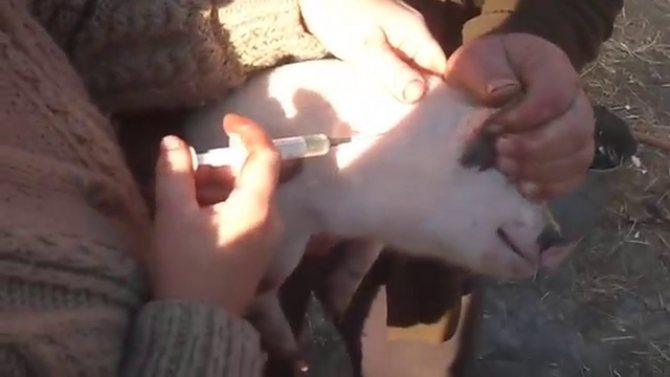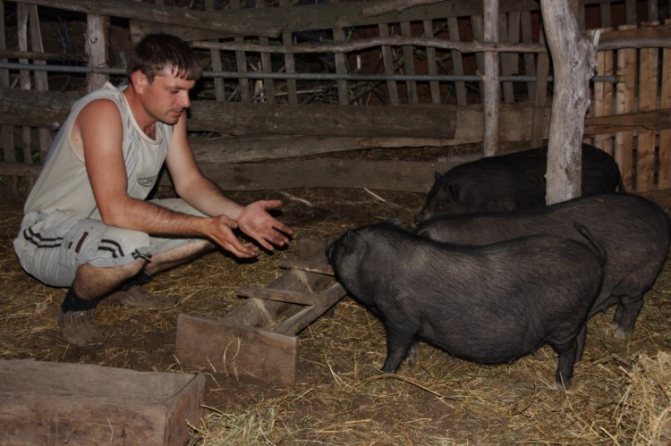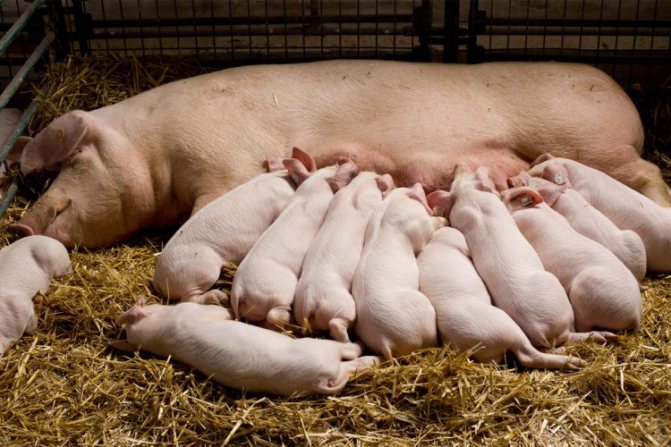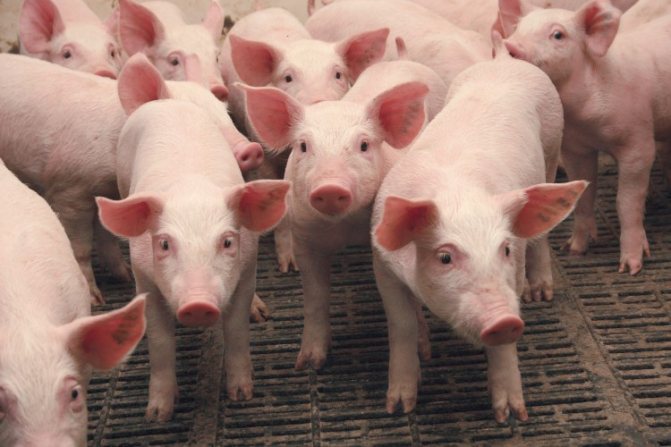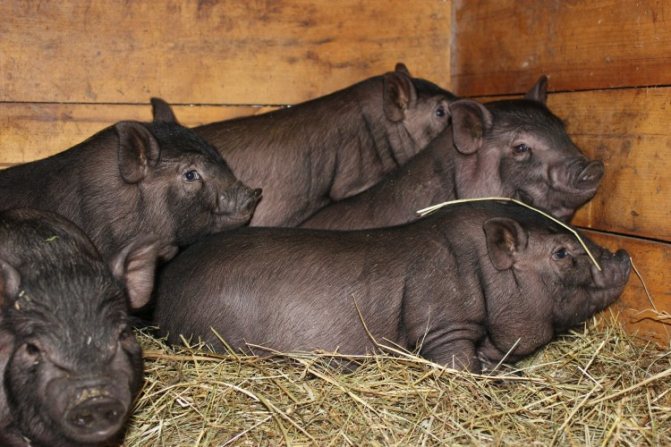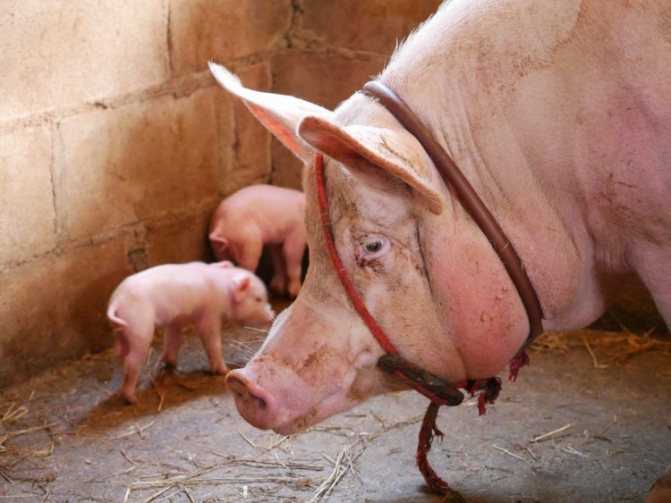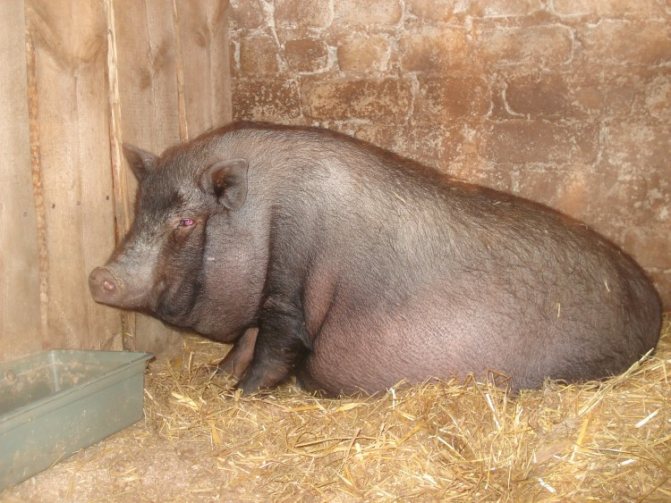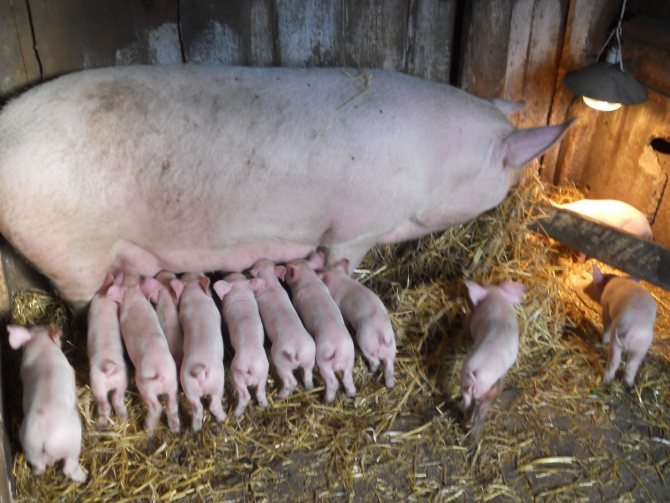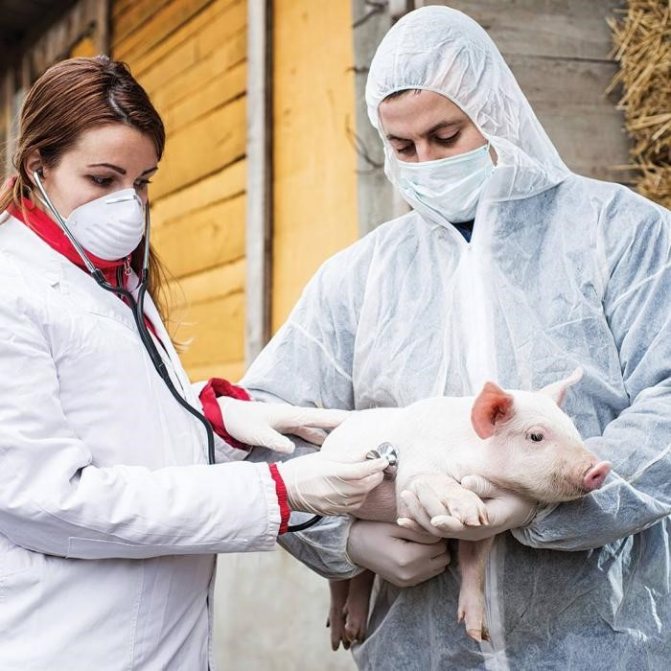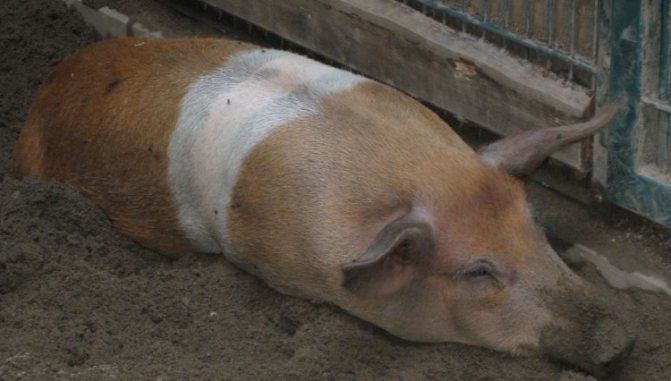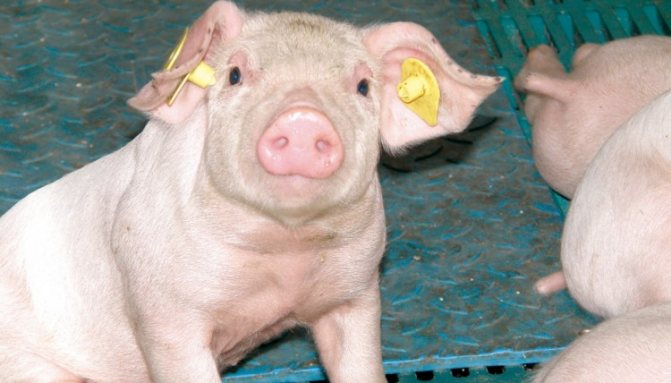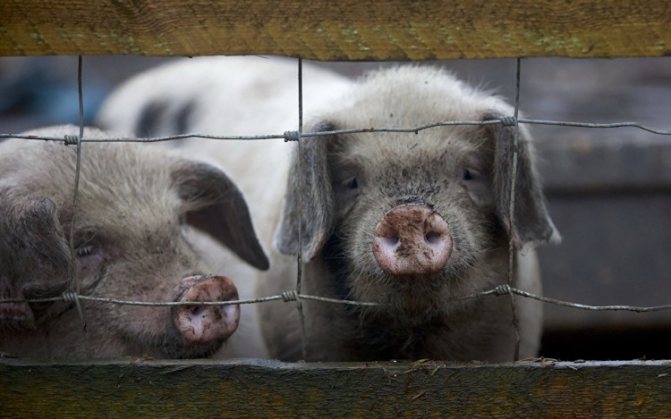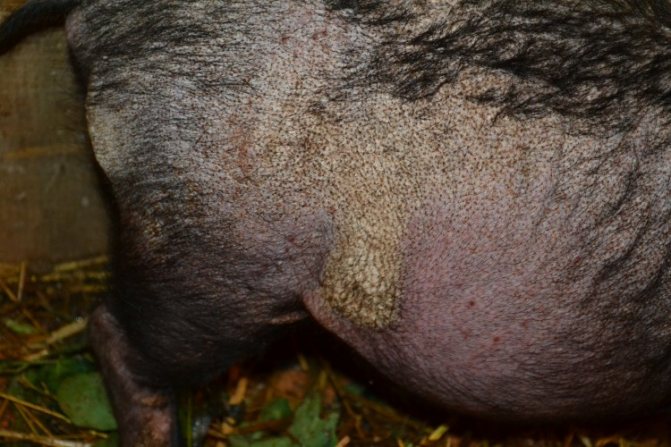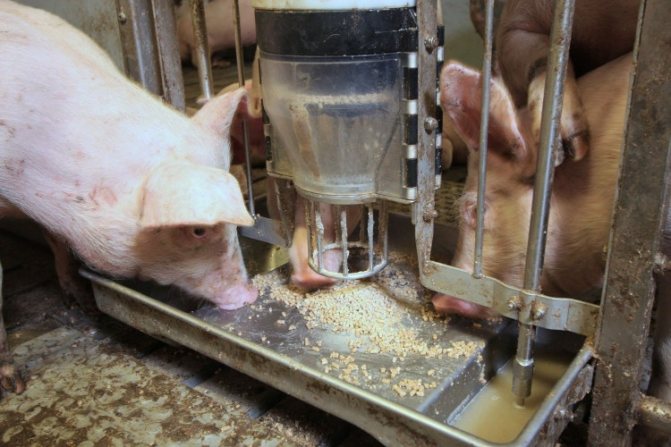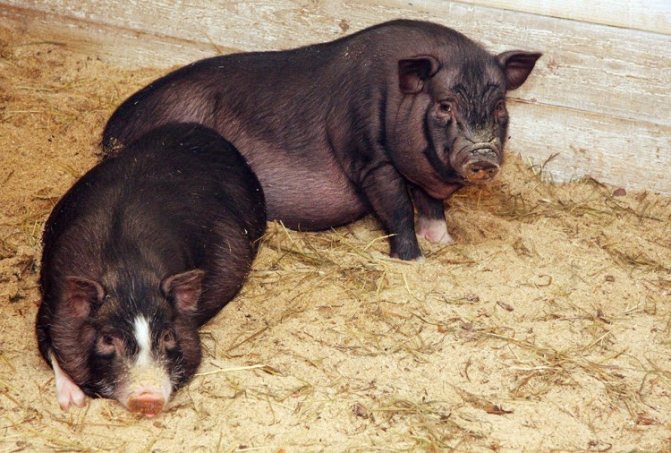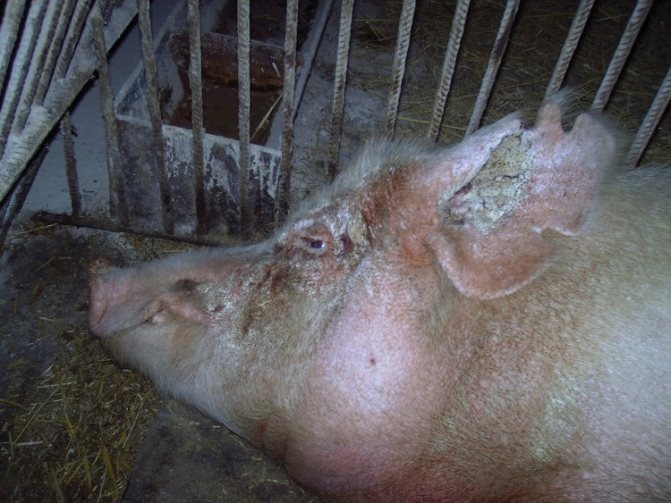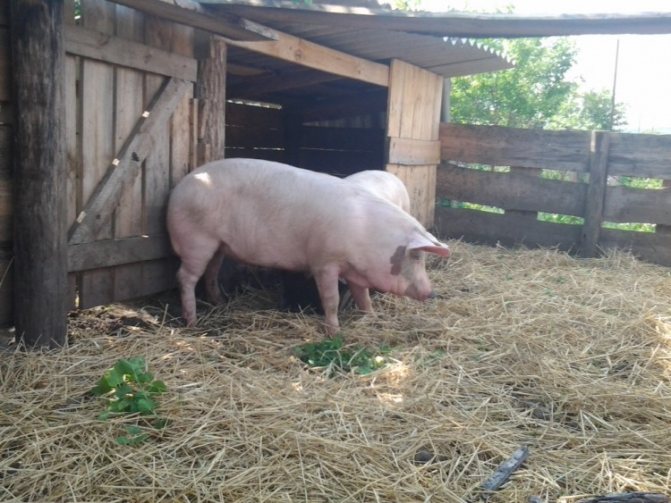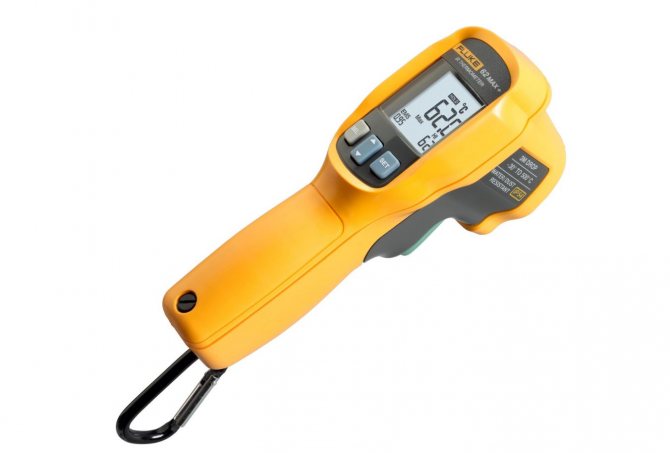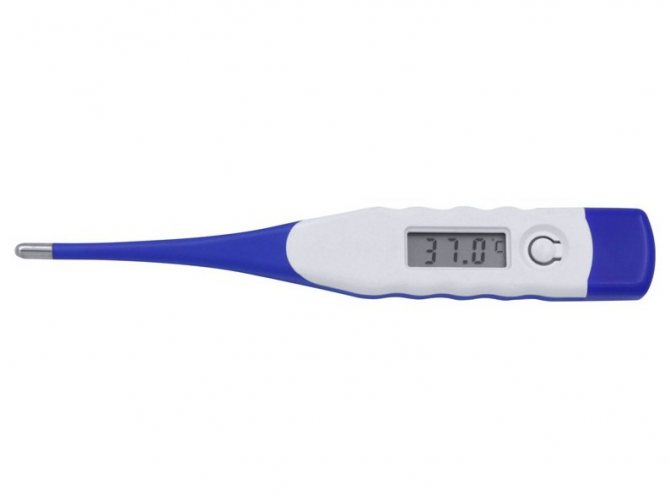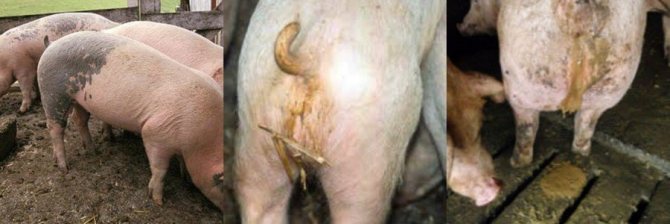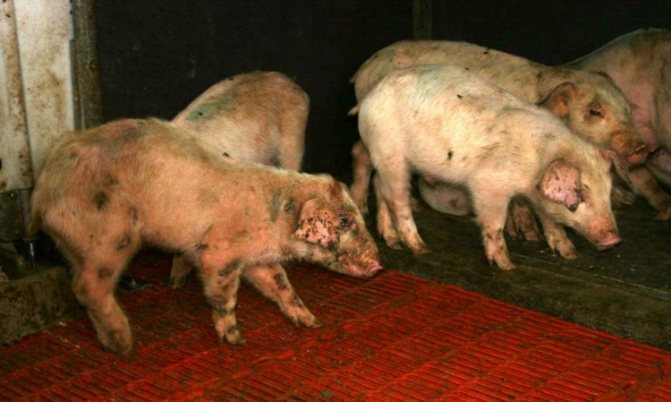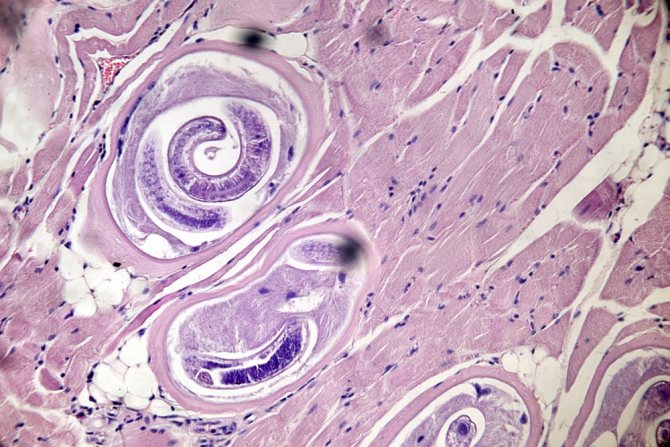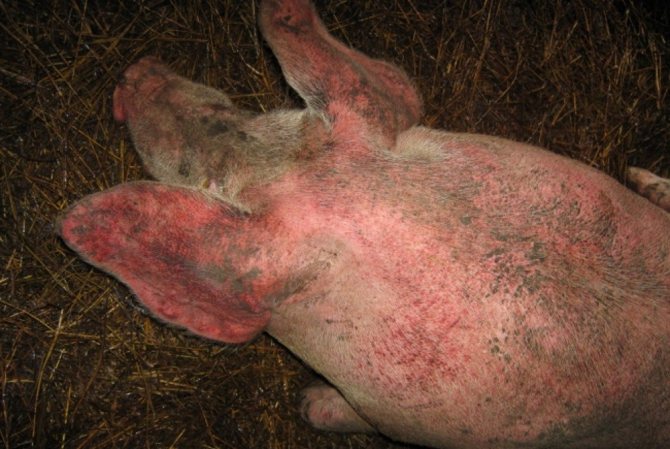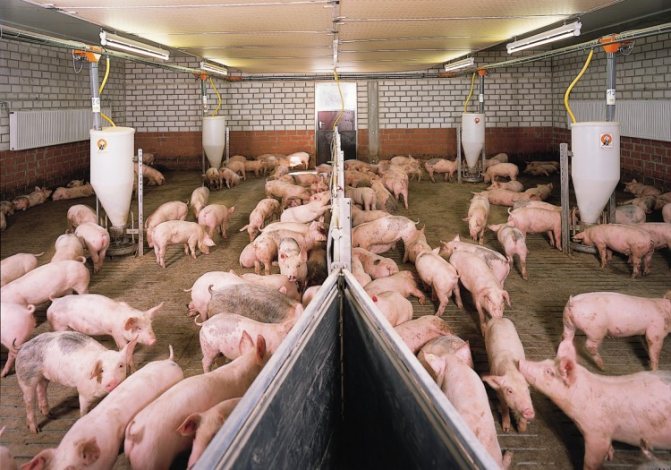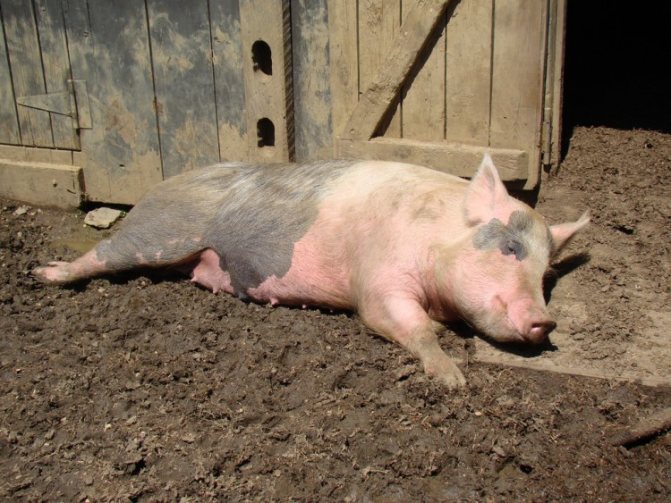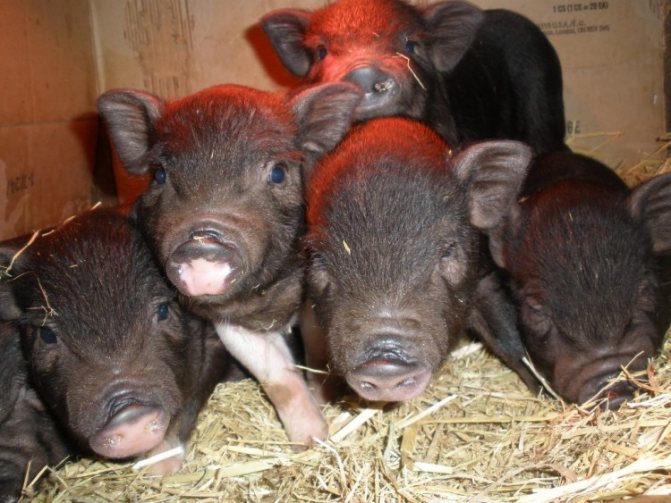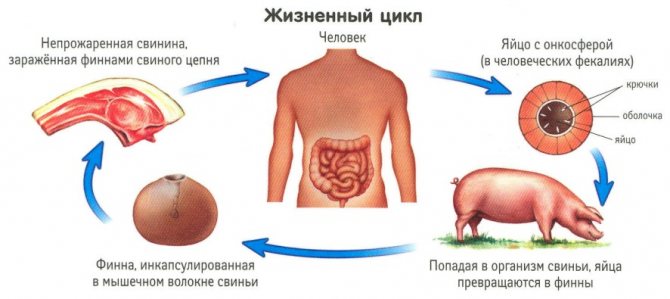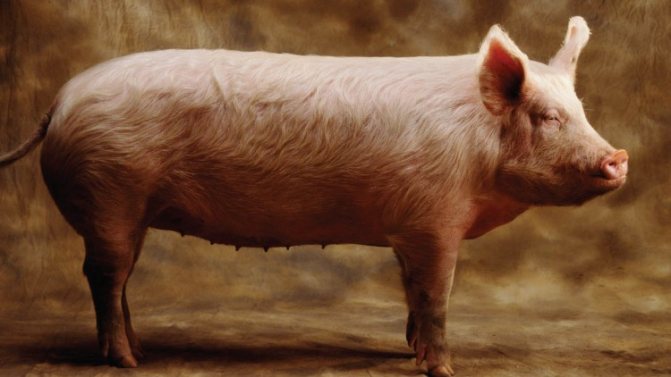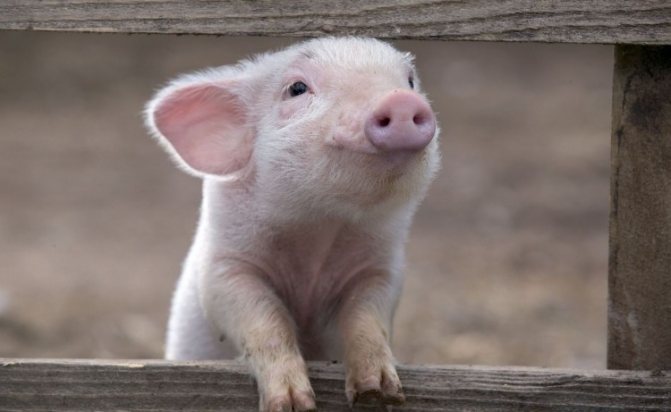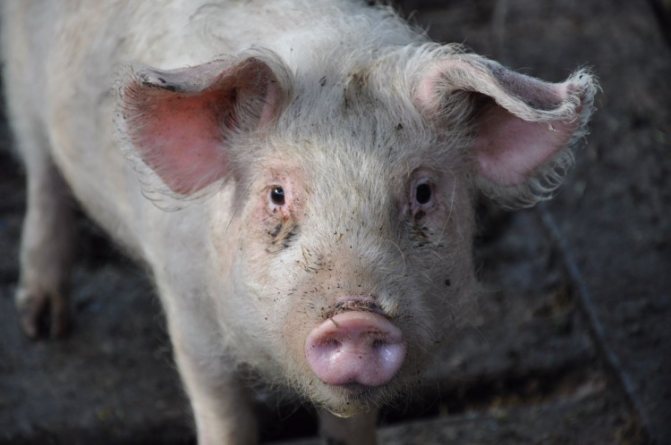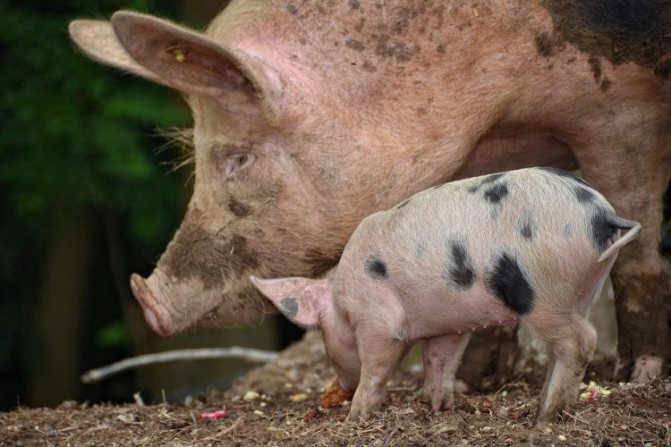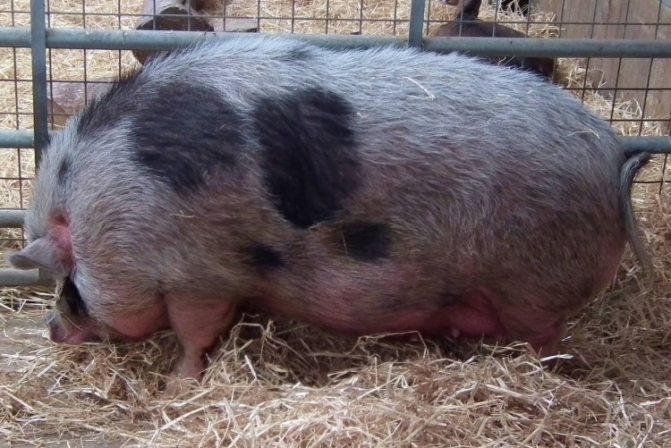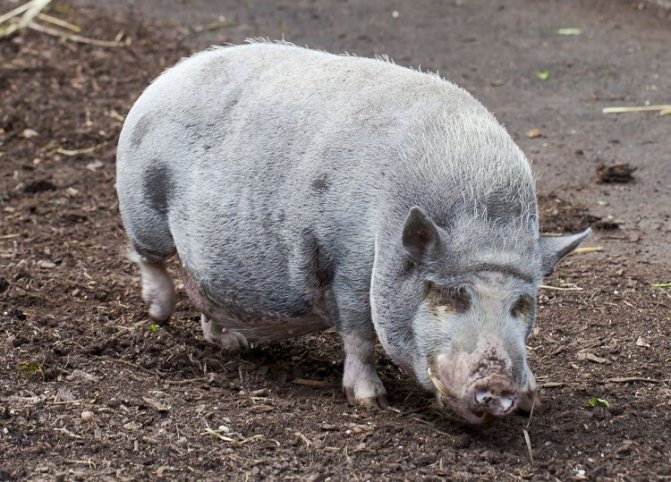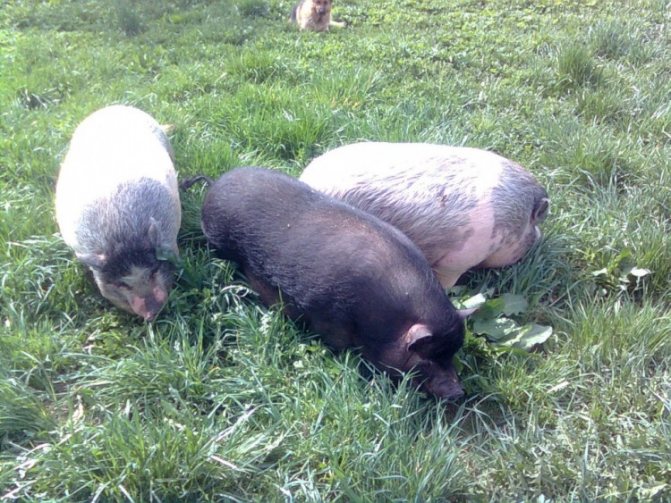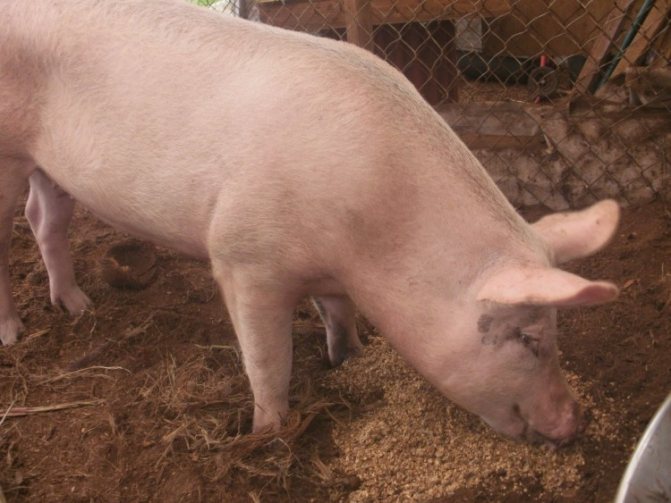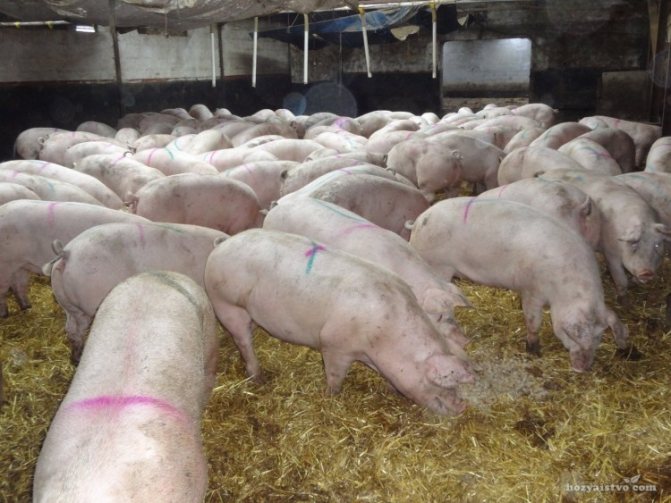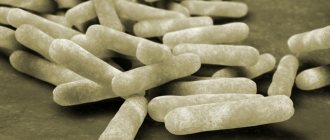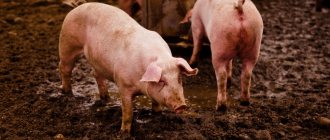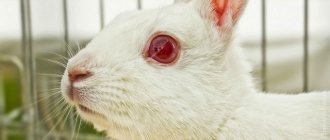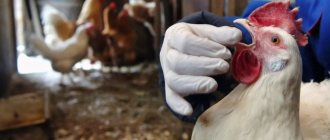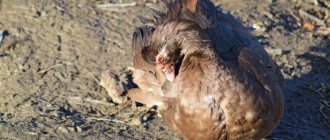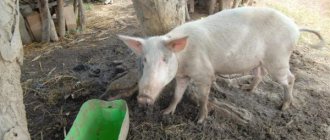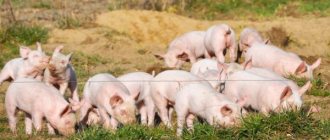When a pig's temperature rises, each farmer thinks about how to treat the animal. If you do not knock it down in a timely manner, the piglet may die. How to determine which disease caused the increase in the body temperature of the pig in order to treat it at home? Tips and reviews, as well as videos will help novice livestock breeders to identify dangerous symptoms, to carry out the correct treatment of a sick pig.
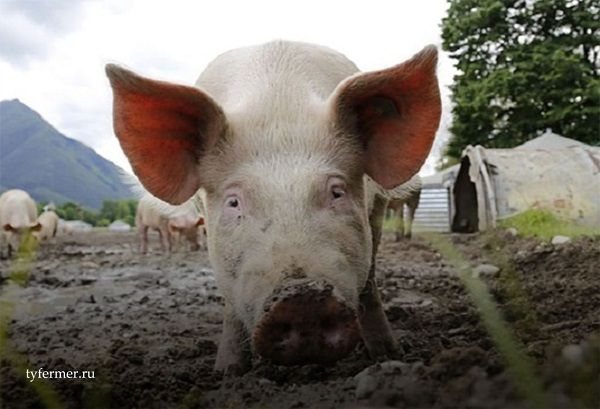
Normal body temperature in a healthy pig is about 38 - 39 degrees
What is the normal temperature for pigs?
Temperature readings in these animals may differ depending on age, sex, weight and breed. In piglets, metabolic processes occur faster, and their heart rate is speeded up in comparison with adults. Therefore, their body temperature is slightly higher. In healthy females, the thermometer rises, on average, half a degree higher than in males. Normal body temperature in pigs ranges from 38-39.5 degrees. An animal is considered healthy if the thermometer shows values:
- З8.5-40 degrees in piglets under the age of 1 year.
- 38-39.5 - in females.
- 38-39 - in males.
Attention! These indicators are considered informative if the temperature was measured by the rectal method or using a special electric thermometer.
If the thermometer showed other values, it is worth contacting the veterinary service to diagnose the condition of the pig.
Prevention measures
The main prevention of edematous disease is compliance with the rules of keeping and feeding piglets. A correct diet is necessary for pregnant pigs so that at the stage of intrauterine development the offspring receive all the necessary components for normal development and strengthening of immunity. From the third day of life, young animals begin to be fed with vitamins, and in the warm season they are released for walking.
Under no circumstances should piglets be weaned from a sow early. Feeding with concentrates also negatively affects the health of the young. When the animals reach two months of age, they are fed probiotics. The course of admission begins before weaning from the sow, and ends after it. The premises and maintenance equipment must be disinfected periodically. In order to prevent edema disease, it is recommended to be vaccinated with the Serdosan vaccine. The first injection should be done on the tenth day of life. After 14 days, the procedure is repeated.
External signs requiring temperature measurement
When is it worth taking up a thermometer? A careful approach to your animals will allow you to determine the malaise by external signs. Consider them:
- Lethargy or excessive agitation.
- Loss of appetite, complete refusal to eat.
- The appearance of a rash on the body.
- Stool disorder.
- Vomiting.
- Shaky gait.
- Body trembling.
- Raised and dull stubble.
- Hot piglet, animal ears.
- Red eyes.
- Heart palpitations.
- Labored breathing.
Reference. Pigs, when feeling unwell, usually strive to hide under the bedding. Having noticed this behavior, it is worth measuring the pet's body temperature.
Reasons for the rise in temperature
What health problems can cause fever in pigs? There are a lot of them, let's consider the main reasons for this condition:
- Diseases of the respiratory system - inflammation of the lungs, trachea, bronchi.
- Viral infection (plague, paratyphoid fever).
- Bacterial infection (dysentery, erysipelas, mastitis).
- Gastroenteritis, dyspepsia.
Viral infection in pigs
All of these ailments are dangerous to the animal. It is important to notice the symptoms of the disease in time and take action - call a veterinarian for an examination. In some cases, delay can cost your pet's life, and if the disease is infectious, healthy pigs can also become infected.
Types of infections
Among this group of especially dangerous intractable diseases common among pigs, the following can be distinguished:
- Pseudo-rabies (Auesky's disease);
- Circovirus;
- Rabies;
- Jaundice;
- Pasteurellosis;
- Tuberculosis;
- Siberian ulcer;
- Plague;
- Erysipelas (extensive pink spots);
- Listeriosis;
- Smallpox;
- Foot and mouth disease;
- Colibacillosis;
- Helminthiasis. The defeat of internal organs by various parasites (worms, worms)
Metering methods
There are several ways to measure body temperature in pigs. However, not all of them are correct and reflect the exact picture of the disease. To make a diagnosis, the animal needs to have reliable information about the thermometer readings at its disposal. Consider correct and incorrect metering methods.
Correct ways to measure temperature
For animals, the most informative way to measure temperature indicators is the rectal method. It involves inserting the tip of the thermometer into the rectum of the animal. In this case, preference is given to the electronic device. It is safer in every sense.
The animal is placed on its side (preferably the left one), calmed down, held by force. The pig's tail must be taken to the right. The tip of the measuring device is lubricated with fat or petroleum jelly and gently inserted into the anus. The duration of the procedure using a mercury thermometer is 7 minutes. If an electronic analogue is available, it is enough to hold it in the rectum for no more than a minute.
Incorrect methods
Some pig breeders, due to their inexperience, measure the temperature of the animal in the wrong way. For example, they fix the thermometer to the animal's skin with a plaster. This method does not provide accurate information about the pet's health. The error with such a measurement can be 1-1.5 degrees, but in this case it will not be possible to detect fever in a pig. The problem lies in the large layer of subcutaneous fat in pigs, and the fat mass does not transmit heat well. The pet's skin may appear cool, while the pig is actually feverish.
Attention! After each temperature measurement procedure, the device should be disinfected. This will avoid contamination of other individuals and humans. For disinfection, the tip of the thermometer should be wiped with alcohol.
Measuring instruments
To correctly measure the temperature of an animal, you must have one of the following devices at your disposal:
- An ordinary mercury thermometer.
- Digital Thermometer.
- Electric thermometer.
- Measuring instrument with infrared sensor.
Each of the listed devices can be used to diagnose the health of a pet, as it can give true information about temperature values. Let's consider the advantages and disadvantages of each of them.
Mercury thermometer
The well-known mercury thermometer is highly accurate, but has a number of disadvantages:
- It should be kept in the pet's rectum for at least 6-7 minutes, and this is problematic when it comes to an adult with an unbearable character and poor health.
- It is traumatic - one wrong movement and the bulb can break, while injuring the animal cannot be avoided.Mercury, which can enter the pig's rectum and the human respiratory tract, is also dangerous.
If another thermometer is not available, use the help of another person to immobilize the pig as much as possible.
Electric thermometer
Such a device is the most convenient and safe. You can buy it online or in specialized medical equipment stores. The principle of its operation lies in changing the values of the resistance of the conductor depending on temperature fluctuations. It is easy to use it - it is enough to attach the sensor (electrode) to any part of the animal's body and record the indicators.
Digital Thermometer
This device is a modern analogue of the mercury predecessor. It is also inserted into the anus of a pig. The measurement procedure is short - it takes only 1 minute. Such a thermometer is safe as it does not contain mercury and is made of plastic. The disadvantages include inaccurate data when the battery power is low.
Fertile soil for E. coli
Edema disease of piglets can begin at any time, regardless of the season, but more often in summer and autumn. Escherichia coli is activated in weaned piglets due to:
- stress (separation from the mother, mixing with other piglets, the formation of a group hierarchy);
- monotonous low-vitamin feed;
- a sharp transition from one type of feeding to another;
- unsanitary conditions in the pigsty, violations of zoo hygiene, lack of separate rooms for piglets and sows;
- lack of exercise of animals (walks in the open air or in special rooms, corridors).
Read more: Andalusian horse breed origins care and breeding features
Most often, the disease is associated with nutrition. Often, dry concentrated feed becomes the main meal of a piglet after weaning. It is less digestible and is based on starch and carbohydrates. It cannot be compared to easily digestible sow milk, which contains fat, protein and lactose.
What to do at 41?
If it turns out that the pig has a temperature of 41 degrees or higher, it is necessary to immediately separate the animal from other individuals. Next, you need to observe him for some time, recording additional symptoms of the disease. It is worth making a few more temperature measurements with a time interval of an hour and a half. This is necessary, since the animal experiences fluctuations in temperature values during the day. For example, in the evening, the body becomes warmer, as well as after eating. If the thermometer stubbornly shows hyperthermia, urgent veterinary assistance is needed. What information must be provided to the veterinary service employee:
- Changes in the behavior of the pig, symptoms of the disease.
- Thermometer readings.
- What kind of food does the animal eat?
- Have there been any contact with sick individuals lately.
Further actions will be announced by the veterinarian. After examining the pet, he will prescribe treatment.
It is easy to find out what temperature in pigs is the norm - in young individuals (up to one year of age) it fluctuates between 38.5-40 degrees, and in adult animals, an increase in the value to 40-41 degrees should already alert. If the thermometer shows hyperthermia, you should immediately separate the sick individual from the rest of the pigs to avoid infection and contact the veterinary service.
An indicator of the health of pigs, as well as of other domestic animals, is body temperature.
Raising or lowering it is a cause for concern, perhaps the pig is sick and needs treatment. Let's talk about what body temperature in pigs is considered normal and how to measure it yourself.
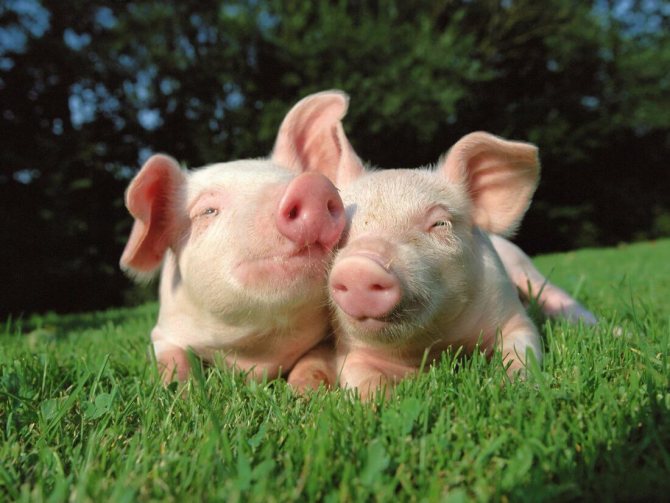

Dysentery
Manifestations of the disease can be detected on day 2.Initially, the animals have poor appetite, apathy, and a slight rise in temperature. After that, you can observe diarrhea, the color of the discharge is reddish. You can also find blood clots and purulent discharge. With a severe course of the disease, parts of the mucous membrane from the intestine can be found in the feces. Therapeutic measures involve the use of antibacterial drugs, magnesium sulfate and metronidazole. It is not recommended to feed the animals for 18 hours, but it is worth increasing the drinking regime.
To protect the animal from this pathology, it is worth observing all hygienic measures. It is imperative to properly maintain and feed pigs. A premix must be present in their diet.
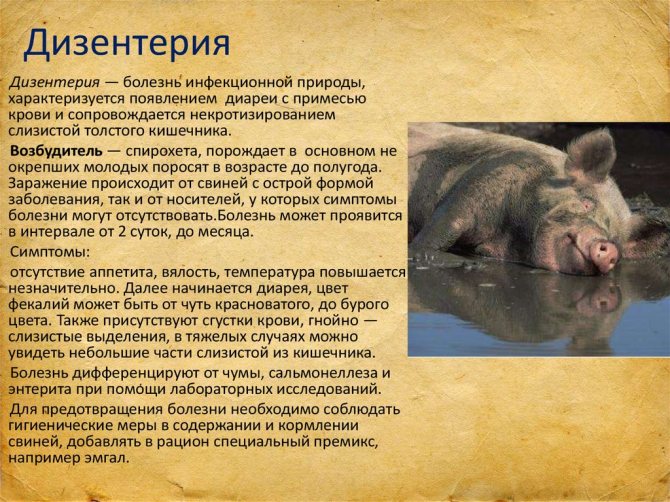

What is the normal body temperature in pigs?
The pig temperature depends on:
- age;
- gender (males slightly lower than females)
- weight;
- breed.
The optimal value is considered to fluctuate between 38 and 39.5, sometimes 40 degrees. If the thermometer creeps above 40, then an inflammatory process is likely to occur in the animal's body.
The normal temperature for females is 38-39.5, for males - 38-39 degrees, piglets have different indicators. The fatter the pig, the more its body warms up. Temperature readings can change with changes in the degree of mobility of the pig, therefore measurements are taken when the animal is at rest.
Piglets
The body temperature of suckling pigs differs by several degrees from that of adult pigs. The norm is considered if there is a mark of 38.5 or 40 degrees on the thermometer. Such indicators are normal for pigs under the age of 1 year.
Important! Piglets are often sick, so if the appearance of the animal seems suspicious, and the temperature does not deviate from the norm, it is still better to call a veterinarian.
Parasitic diseases of pigs
Diseases in pigs, which are provoked by the active action of parasitic cells in the animal's body, can quickly spread if sick individuals cohabit with healthy ones. These diseases have specific symptoms and respond well to treatment if they are detected early.
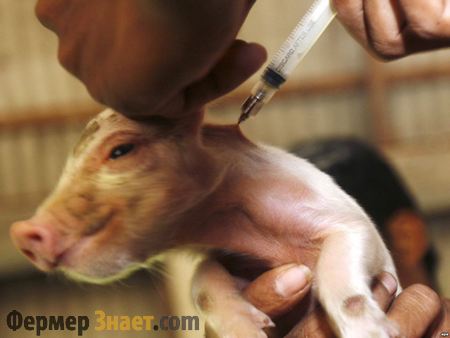

Ascariasis
The causative agent of this disease in pigs is a parasitic organism that settles in the small intestine of an animal - ascaris. The source of the spread of pathogenic parasites is the infected feces of a sick individual, through which water and feed are contaminated.
The main symptoms of ascariasis in pigs are:
- Inflammatory diseases of the respiratory tract;
- Frequent bouts of coughing, vomiting, and difficulty breathing;
- Increased body temperature;
- Developmental delays and declining growth rates.
Treatment of ascariasis disease in pigs is carried out using the following methods: deworming with the use of special medical devices for sows and piglets on farms.
As a preventive measure against roundworms, it is recommended to perform the following actions:
- Compliance with sanitary standards for livestock buildings and walking yards;
- Heat treatment of pig waste products;
- Separate grazing for adults and juveniles.
Trichinosis
The causative agent of this disease in pigs is the Trichinella nematode, which lives in the intestines and muscle tissue of a sick animal, and also enters the body by ingesting contaminated food.
The main routes of infection:
- Grazing animals in an unprotected area;
- Use of untreated food or industrial waste for feeding pigs.
The obvious manifestations of trichinosis in pigs are:
- Weakness and lack of appetite;
- Refusal of active movements and soreness in the muscles;
- Swelling of the head area;
- Vomiting and diarrhea;
- Disturbances in the work of the cardiovascular system.
For the treatment and prevention of this disease, medical routine vaccination is used, as a result of which animals develop stable immunity to Trichinella for several years.


Cysticercosis
This disease is caused by cysticercus tapeworms. Parasites are spread by dogs and other carnivores, which release helminths into the environment through feces.
Infection of pigs with parasitic organisms can occur in the following ways:
- Eating parts of sick animals;
- Drinking contaminated food and water.
Symptoms, as well as effective treatments for this disease of pigs, have not been invented. Therefore, in order to prevent the spread of cysticercosis among animals, it is worth carefully monitoring the living conditions, nutrition and diet of pigs.
When is it necessary to measure it
Temperature measurement must be performed if:
- the animal does not eat anything during the day;
- the pig's body is covered with red spots or a rash;
- the pig has diarrhea, it vomits;
- the animal staggers, often lies on its stomach, refuses to get up when prompted to it;
- the pig is trembling;
- the skin turns pale, the bristles rise;
- the piglet and ears of the animal change color - turn pink or blue;
- redness of the eyes is observed;
- the pig is breathing heavily, its heart beats too fast (to measure it is enough to put your hand on the left side, the heart is located between 3 and 6 ribs).
Any change in the usual behavior of an animal that is not related to the external influence of a person on it should alert. Measuring the temperature in this case is the first of the possible actions that can be taken at home even before the arrival of the veterinarian.
Most common diseases
These diseases, in fact, are associated with improper feeding and conditions of detention. For the effectiveness of treatment, it is sometimes enough to change the diet, improve (repair, insulate) the pigsty.
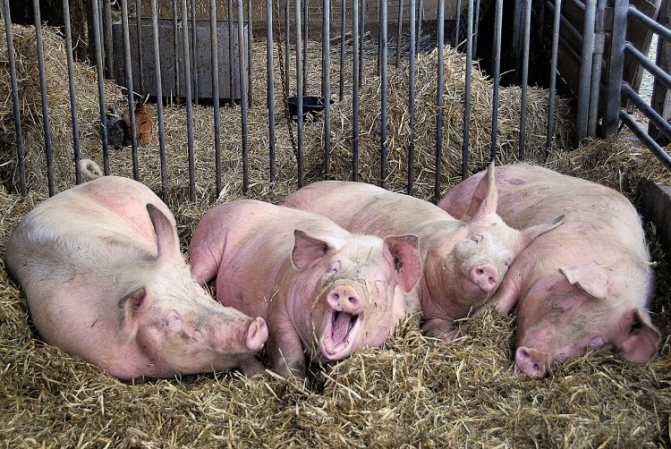

Among all the variety, the following typical diseases can be distinguished, resulting from negligence and oversight:
- Stomatitis;
- Avitaminosis;
- Diseases of the upper respiratory tract and lungs (colds, runny nose, bronchitis and even tuberculosis!);
- Obstruction of the esophagus, which occurs when hungry pigs swallow food without chewing;
- Qatar of the gastrointestinal tract;
- Poisoning with poisonous plants or poor quality (expired) feed;
- Hypoglycemia;
- Anemia;
- Bronchopneumonia and bronchitis;
- Peptic ulcer disease.
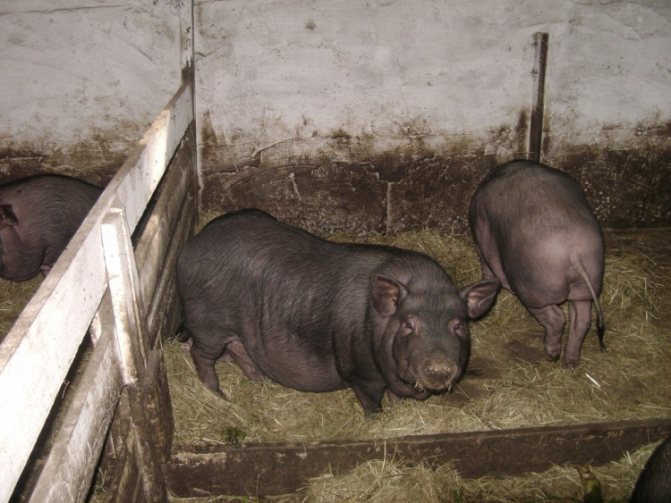

How to measure it correctly
An ordinary mercury thermometer is most often used to determine the temperature, but modern measuring devices - electronic, electrical and infrared thermometers are also suitable. The main thing is to make the measurements correctly.
Measurement methods
There is only 1 correct way to measure temperature. For this:
- wait for the animal to lie on its side, preferably on the left (if the pig does not do this, you will have to lay it on the floor against its will, sometimes it is not easy to do this)
- stroking the animal on the sides and back, gently insert the sharp part of the thermometer into the anus (the tip of the thermometer should be smeared with fat, petroleum jelly or some kind of oil);
- wait 7 minutes, not forgetting to stroke the animal soothingly (so that the pig does not rise sharply, its hind legs can be tied);
- after the specified time, the thermometer is removed and the indicators are studied.
If the thermometer is electronic, the measurement speed is reduced to 1 minute. You can remove it immediately after receiving a sound signal.
Do not worry that the animal will be hurt or unpleasant, this is an important procedure, without which no diagnosis can be made. Some inexperienced farmers try to glue an electronic or mercury thermometer to the side of an animal or insert it into its ear.
This is fundamentally wrong, the indicators obtained in this way differ from the real ones by 1-1.5 degrees, which is associated with a thick layer of subcutaneous fat that interferes with measurement (temperature indicators deviate to the lower side). If the pig has a really high temperature, then the farmer simply will not see it on the device. In the described way, the temperature of the animal is measured only with an electrical device.
Important! In the summer heat, the body temperature of animals is measured in the evening or morning, the animal must be rested. At the same time, it should be remembered that in the evening the pig's body is warmer, the temperature can rise after eating.
Suitable thermometers
To determine the temperature of animals use:
- Mercury thermometers. A cheap and high-precision device that can be purchased at a regular pharmacy. The negative aspects of using it include the need for a long retention in the rectum and fragility. The thermometer is easy to break, it can crack during measurement, and then hazardous mercury will enter the body of animals and humans. Measurements with a mercury thermometer should be done carefully, the pig should be kept by 2-3 people.
- Electronic thermometers. An easy-to-use device that can be read in less than 1 minute. The disadvantages of the application include inaccuracy. If the battery is discharged or does not fit snugly against the mount, the readings may fluctuate or not be reflected on the display at all.
- Electric thermometers. Sold in specialized stores, designed to determine body temperature in difficult conditions, for example, when an animal resists. The operation of the device is based on the dependence of the change in the values of the resistance of the conductor on the temperature level. To measure, apply the device to the animal's skin and wait for a sound signal.
- Pyrometer or infrared thermometer. To measure, the device is brought no closer than 3-5 cm to the pig's skin, as the desired result appears on the display. Unfortunately, the high cost of a pyrometer does not always allow its use in small farms.
Fever in a pig
An increase or decrease in body temperature is a bad sign, indicating the presence of a problem that has not yet manifested itself externally. But the farmer should not panic right away.
If the temperature deviates from the norm by 0.5-1 degrees, it is necessary to take several measurements with an interval of 4-5 hours, use several different thermometers. If the result of repeated measurements is the same, you should call your veterinarian.
The reasons
The reason for a sharp deviation of temperature indicators from the norm can be the following diseases of pigs:
- Erysipelas. Most often, piglets are sick at the age of 3 to 12 months. This is a dangerous infectious disease that spreads at high speed and can affect all livestock within a few days. Unpleasant red spots appear on the ears, head, and then on the whole body of the pig, which disappear with pressure. The temperature rises to 42.5 degrees. Erysipelas is transmitted to humans, the animal left untreated quickly dies. Infected pigs are quarantined and given anti-inflammatory and antipyretic drugs.
- Foot and mouth disease. If unpleasant watery blisters appear on the patch, between the hooves and in the mouth of the pig, it makes sense to determine the temperature. Most likely, it increased to 41 degrees (an increase in indicators is not always observed). The sick animal does not eat, it limps. The disease is not cured, the pig is slaughtered, the carcass is destroyed.
- Plague. The temperature ranges between 41 and 42 degrees. Red spots appear on the skin, the stool becomes liquid, the hind legs are paralyzed. Lack of treatment leads to the death of the pig 4-8 days after infection. Piglets die after 24-48 hours.It is the constant measurement of temperature indicators that allows you to correctly diagnose the disease.
- Dysentery. The body temperature rises to 42 degrees, the stool is liquid, blood appears in it. Most often, the disease affects young pigs, their body quickly loses water and the animal dies.
- Flu. The temperature in pigs also rises with the flu. The animal is in a fever, it refuses to eat, drinks a lot, sneezes and coughs. Most often, small piglets get sick from the age of several weeks to 1-2 months.
The usual temperature indicators can change even with severe poisoning, sometimes the temperature changes even when animals are infected with helminths, so you do not need to exclude a single disease from the list. It is important to understand that viruses act almost instantly, so at the slightest sign of illness, you should call your veterinarian.
What to do
If you suspect one of the described diseases, it is necessary to keep the thermometer as close as possible, record the slightest temperature changes and report them to the veterinarian, who should be called immediately. The veterinary officer who receives the call is told:
- signs that alerted the farmer (how much the pig eats, drank or not during the day, what consistency the stool has, what is the color of the whites of the eyes, the color of the skin has changed or changed);
- thermometer readings (preferably several marks at once);
- the name of the food that the animal consumes more often or ate the day before.
It is also necessary to remember whether the pig has been in contact with other domestic animals, including cats and dogs, how long ago the treatment of the premises from fleas, rats and mice was carried out.
While waiting for the arrival of the doctor, the sick animal is isolated from the rest, placed in a clean, dry room with good ventilation and warm floors. Do not let the pig lie down on the cold stone or concrete floor, but there will be such attempts, since the animal will look for a cooler place. Be sure to throw a straw bedding on the floor or sprinkle it with sawdust.
Otherwise, there is a risk of developing a cold in the animal. In addition, you need to put a tub of water at room temperature in front of the pig and remove all feed. Before the arrival of the doctor, it is better not to feed at all, so that if the feed turns out to be the main cause of the disease, it does not aggravate the situation.
Pig infectious diseases
This group of diseases is the most common, since infectious diseases in pigs can quickly and easily be transmitted from one individual to another. Most often, these diseases appear under the influence of pathogens and, without adequate and timely treatment, lead to death.
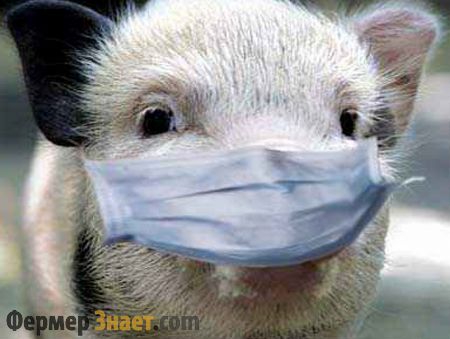

Classical swine fever
The causative agent of this disease is the specific Pestivirus virus, which is concentrated in the blood, urine, bile and internal organs of the animal. Therefore, sick individuals can actively spread the infection. There are such ways of transmission of swine fever:
- Feed;
- Water;
- Manure;
- Litter;
- Meat.


Symptoms of this disease:
- Increase in body temperature up to 42 ° C.
- Lack of mood and interest in life.
- Attacks of vomiting and coughing.
- Constipation or diarrhea.
- Convulsive states.
- Weight loss.
Treatment of classical swine fever is usually not carried out, since sick animals are killed and their carcasses are destroyed. To prevent the occurrence of this disease, it is worth doing a special immunization routinely.
Pig erysipelas
The causative agent of this disease in pigs is an infectious immobile bacillus, which does not withstand high temperatures and is able to continue to function at low temperatures.
The main symptoms of pig erysipelas:
- With a mild course - cutaneous exanthema.
- In the case of an acute course - an increase in body temperature up to 42 ° C, inflammatory processes of the mucous membranes, constipation and weakness.
- In case of chronic course - weight loss, disturbances in the work of the cardiovascular system, skin diseases.
The treatment of erysipelas will be effective if in this process a special antiphosphorous serum and antibiotics are used. To prevent the onset of this disease, active immunization should be carried out regularly.
Pasteurellosis
This disease in pigs occurs due to exposure to the pathogenic bacteria Pasteurella. The reason for the spread of the infection is the unsanitary conditions in the feeding and keeping of animals.
Symptoms of pasteurellosis most often are as follows:
- Lack of interest in life, decadent mood.
- The appearance of diarrhea with blood impurities.
- Increased body temperature.
- Hemorrhage on the skin.
- General weakness and lethargy.
- Disturbances in the work of the cardiovascular system.
In most cases, pasteurellosis occurs in an acute form and leads to the imminent death of the animal, so veterinarians recommend routine vaccination.
Experienced Farmer Tips
To avoid the development of dangerous diseases associated, among other things, with an increase in temperature, experienced farmers recommend:
- Choose the right feed, monitor their quality. The feed must be suitable for the specific breed of pig. You need to purchase them only from trusted manufacturers.
- Observe hygiene standards. The pigsty needs to be cleaned every day; there should be no dirt in the drinkers and feeders. Indoor floors are treated with caustic soda once a week. All the tools used are subjected to the same processing. The walls and ceiling are treated with slaked lime. Holes in the walls and floor are sealed, traps for rats and mice are set up.
- Timely vaccinate. Young animals are vaccinated against rickets, salmonella, plague and erysipelas in the first 30 days of their life.
- Monitor the state of the pig's immune system. Piglets are given drugs against rickets and vitamin deficiency. When signs of these diseases appear, a weak solution of potassium permanganate is daily soldered to pigs, chalk and table salt are added to the feed.
- Do not allow pigs to dig in the mud while walking. Dangerous bacteria persist in the ground for decades, if the animal is not vaccinated against swine fever or foot and mouth disease, the risk of infection increases.
- Limit contact of pigs with other pets. Dangerous diseases are transmitted from other inhabitants of the barn - chickens, dogs, goats.
To reduce body temperature, piglets and adult pigs are poured with warm water from a hose, but this method only helps if the animal has the flu or dysentery. In other cases, water treatments will not be successful.
Body temperature is an indicator of the health of a pig. It is considered the norm if it does not exceed 40 degrees with a lower bar of 38 degrees. At the same time, temperature jumps can be observed in young animals and sows. Minor upward changes occur in the evening and after meals. A mercury, electronic, electric or infrared thermometer is used to measure temperature. Before using the device, you must read the instructions accompanying it.
An incorrect determination of the temperature can lead to the fact that the farmer learns about the disease of the animal later than is necessary for the successful implementation of the treatment. If the indicator grows and reaches 41-42 degrees, a veterinarian is called.
Watch a video about measuring temperature in animals:
Have you noticed a mistake? Select it and press Ctrl + Enter to tell us.
Pig body temperature - an indicator of the health of the animal. Deviations from the norm can occur in individuals of any age. Violation always requires attention.
Leaving the pig at an elevated temperature without finding out the reasons is unacceptable. Many pathologies begin with such a symptom, so it is important to take the necessary measures in a timely manner.
The right remedy is antibiotics
The treatment of a piglet for intestinal disease includes taking antibiotics. It is better to prescribe medication, determine the duration of the course and the dose to the veterinarian.
It should be borne in mind that E. coli is not susceptible to all antimicrobial drugs. Therefore, laboratory studies of the strain, its reaction to the antibiotic, should be carried out.
To fight infection, gentamicin, streptomycin, furazolidone, neomycin sulfinate, sulfonamide are suitable.
Read next: Caterpillars on Cabbage Folk Remedies (10 Useful Tips)
After a course of antibiotics, it is very important to normalize the microflora in the pig's intestines. This is facilitated by the use of bifidobac, bifilact, enterocide, enterosan, acidophilus. Further, probiotics and prebiotics help keep the intestinal flora normal. This should be done not only in piglets, but also in the sow, since she is the main carrier of infections.
What is the normal temperature for pigs?
Sex, age of the pig affect the indicator. Small fluctuations (0.3-0.5 degrees) can be noted in hot weather, when overheating causes an increase in body temperature, which is not a pathology and does not require treatment.
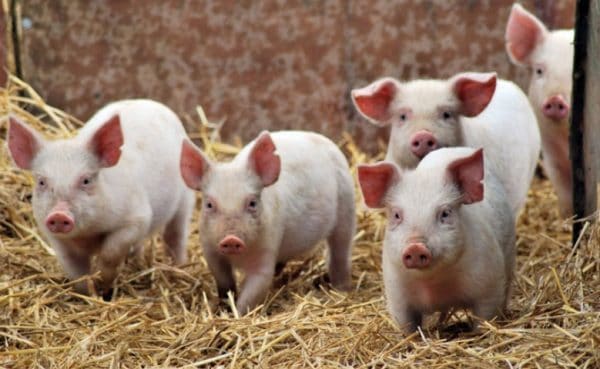

Piglets' metabolic processes are more intensive than in adults.
The metabolic processes of piglets are more intensive than in adults. The body temperature of the first years is higher: its norm is + 38.5 ... + 40 degrees. The highest value of the indicator is observed in the one-month-old piglet.
The indicator for the sow is half a degree higher than that of the male. The normal value for wild boar is + 38 ... + 39 degrees, for females - + 38 ... + 39.5 degrees.
Detection of a deviation of the indicator from the norm to a greater or lesser extent requires an examination of the animal by a veterinarian to identify the cause of the change in the indicator.
Pigs of meat breeds have a lower indicator than decorative ones. The phenomenon is explained by the presence of a thick fat layer in the former, fur in the latter.
Important! Some diseases are first manifested only by a violation of the temperature, and their treatment is effective only at the beginning of development, which makes it more difficult to save a pig or a piglet when other symptoms join.
Non-communicable diseases of pigs
In addition to ailments that arise as a result of infection with pathogenic parasites or after contact with infected individuals, there are such diseases in pigs that depend solely on the conditions of detention, the regime and balance of feeding, the specifics of caring for the animals.
Constipation
This ailment can be either an isolated phenomenon or a symptom of any serious illness. In this case, constipation is necessarily accompanied by an increase in body temperature, general weakness, and difficulty breathing.
The main causes of constipation in pigs are:
- Poor nutrition or consumption of stale foods;
- Overeating.
Treatment of constipation caused by unhealthy diet can be carried out with the use of laxative medications, normalization of the diet and diet, as well as providing sufficient drinking water.
To cure constipation, which has become a symptom of the disease, it is worth seeking qualified medical help and eliminating the causes of an infectious or parasitic disease.
Bloating
This ailment of the digestive system most often occurs due to the excessive accumulation of gases in the abdominal cavity, provoked by increased gas production or a violation of the process of their discharge. The cause of this disease can be excessive overeating, the use of fermenting or stale food.
The main symptoms of bloating are:
- Having anxiety;
- Lack of appetite;
- External increase in the abdominal area in volume;
- Increased production of saliva.
Bloating is treated with the following methods:
- Stopping the use of fermenting and low-quality products;
- A temporary decrease in the amount of food;
- Dousing with cold water and massage of the abdomen;
- The use of medicines.
External signs requiring temperature measurement
Veterinary medicine calls a fever in pigs a fever; it is not a disease, but simply a term for a specific symptom. The growth of the indicator in the animal is accompanied by certain signs.
Measurement is required when the pig has:
- severe agitation or severe lethargy;
- decreased or complete lack of appetite;
- rashes on the skin;
- diarrhea;
- vomiting;
- unsteadiness of gait;
- severe tremors;
- hot patch and ears;
- redness of the eyes;
- breathing disorder;
- strong heartbeat.
The unwell pig tries to hide. Noticing what is happening, the owner must urgently establish the cause of the violation of the animal's well-being.
Reasons for the rise in temperature
There are many factors causing fever in a pig. The fourth part of the indicator disorders occurs due to inflammation of the respiratory system (the main diseases are bronchitis, tracheitis, bronchopneumonia).
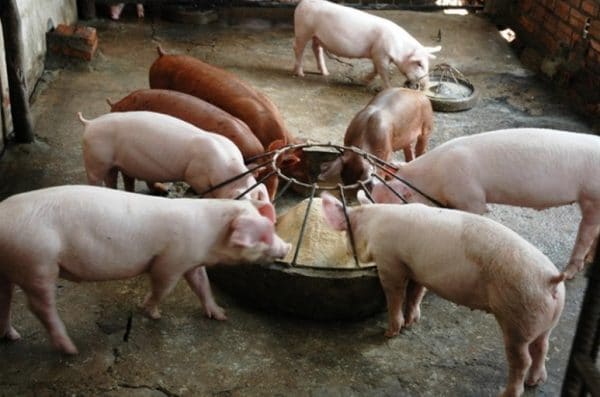

Piglets are more prone to rise in temperature
Infectious pathologies account for 10% of cases of fever. It is important to urgently isolate an infected sick animal from healthy animals and treat them. Vaccination helps to avoid many infectious diseases.
Most of the cases of increase in the indicator are attributed to non-communicable diseases of pigs, which can be successfully treated with the timely involvement of a veterinarian. Fever after the start of therapy goes away in a short time.
Piglets are more prone to a rise in temperature. The main causes of the disorder are gastroenteritis (inflammation of the gastrointestinal mucosa), dyspepsia (indigestion caused by a lack of enzymes, improper feeding).
Treatment for young animals is urgent: severe diarrhea is accompanied by dehydration, causing the piglet to die quickly.
It can provoke a violation of improper maintenance: poor care, low-quality feed, a damp room, hypothermia.
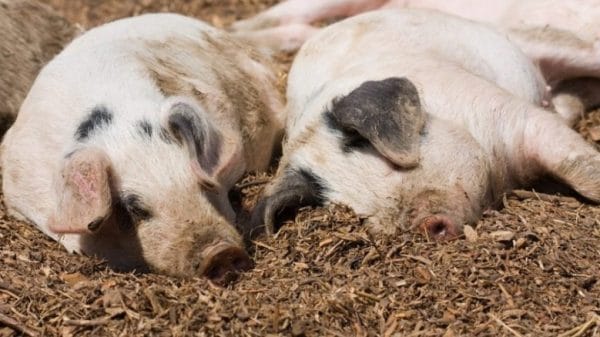

The electronic thermometer will show the result in a maximum of 1 minute
Trauma, stress, parasitic infection of the pig with worms cause fever from moderate to severe. In the summer, an increase in the indicator is noted as a result of a tick bite.
How and how to measure temperature correctly
Pig body temperature is measured in different ways. It all depends on the equipment of the farm, the number of animals. Workers on large farms use a device that measures the temperature of an animal without contact.
The cost of the device is high. On small private backyards, an electronic thermometer is used. The temperature is measured in the rectum.
An electronic thermometer fixes the indicator in a few seconds, the risk of injuring the animal with a modern thermometer is minimal. A glass mercury thermometer is dangerous, used as a last resort.
When taking measurements, the pig, if possible, is placed on its left side. The tail is pushed aside, held by hand, and the tip of the thermometer, smeared with fat or petroleum jelly, is inserted into the anus.
The electronic thermometer will show the result in a maximum of 1 minute.
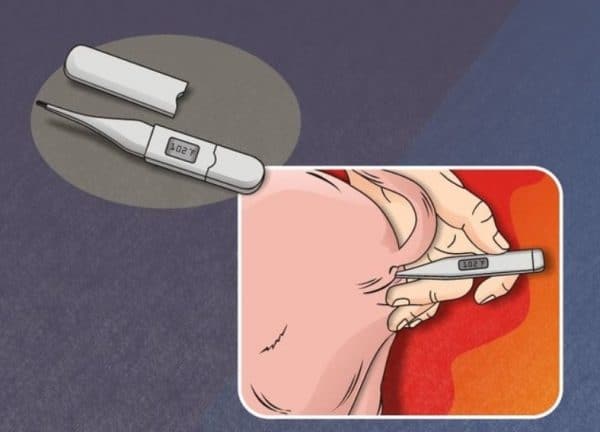

Measuring temperature in a pig
The mercury device will need to be kept for 7 minutes. Novice pig breeders sometimes make the mistake of trying to measure the temperature of an animal by fixing a thermometer on the skin.
The result of such a measurement is incorrect, since, due to the fat layer, the temperature will be significantly underestimated, and timely assistance will not be provided to the animal.
Important! A thermometer used for several animals should be disinfected after the next measurement, preventing the spread of the disease.
Measuring instruments
A thermometer, non-contact measuring the body temperature of a pig, equipped with an infrared sensor, is not required in the private household. For a farmer with fewer than 10 pigs, a pharmacy electronic thermometer is sufficient.
Features of each type of device:
- Mercury thermometer. The cheapest but most dangerous device. The pig to be examined must be secured as securely as possible.
- Electronic thermometer. Safe plastic device that does not contain mercury. The error appears when the batteries begin to run out.
- Infrared thermometer. It is enough to bring the device 5 cm to the animal. The result is given within a second.
Important! When buying a device for measuring the body temperature of an animal, you should choose a high-quality model.
Cheap versions of thermometers made by dubious manufacturers can be very inaccurate.
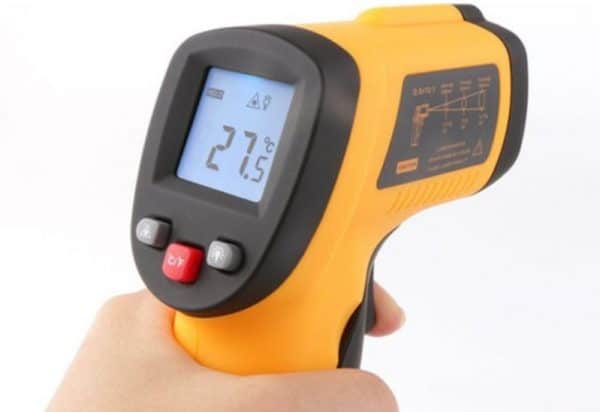

Infrared thermometer
Classification and diagnosis
Visually, pig diseases can be divided into 3 main types:
Non-infectious - not dangerous for other animals and humans. But it is still important to treat the disease on time, otherwise it can grow to complex complications and death.
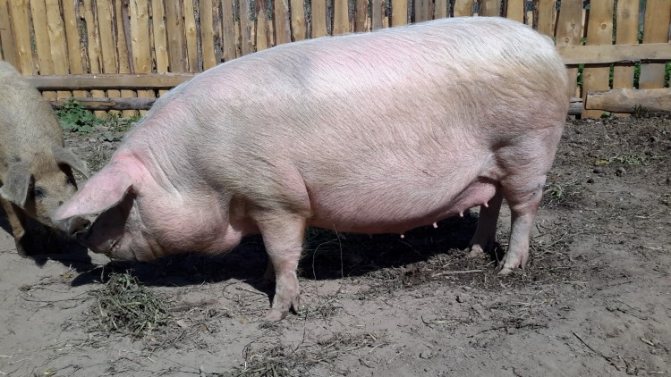

Infectious - they pose a threat to everyone with whom the beast comes into contact. Diseases appear from viruses that enter the individual through blood, saliva.
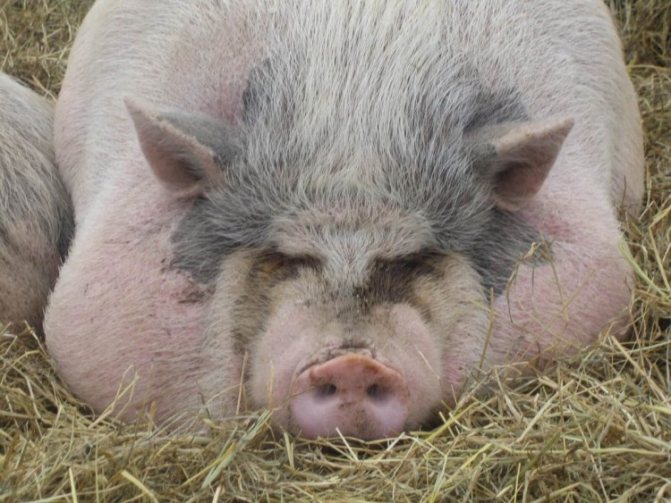

Parasitic - harmful to the pig, as well as other animals on the farm. As you know, worms can spread through any object, feeder, drinker and hay.
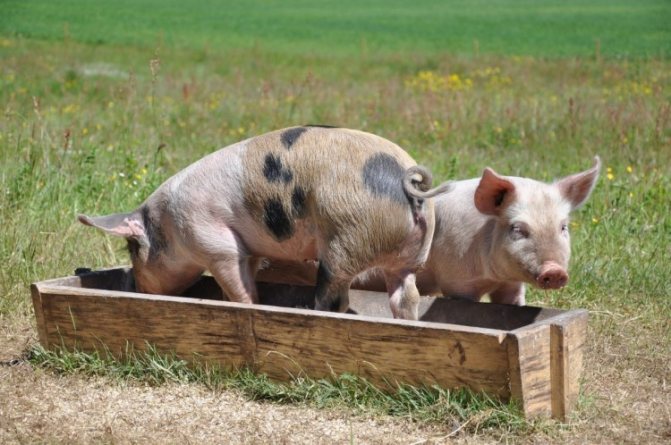

Pig diseases are diagnosed by a veterinarian and a laboratory. It is extremely important for any type of disease, especially if the farmer does not understand the cause of the disease or there is no diagnosis.
What to do at 41?
An increase in the indicator to +41 degrees and above in the overwhelming majority of cases is a sign of the development of pathology. The animal needs to be urgently isolated from the rest of the livestock.
The state of the resettled pig is monitored. It is important to watch for other symptoms. The temperature of the animal is measured several times a day at intervals of one hour.
If, after repeated measurements, the indicator remains normal, this means that the animal is healthy and there has been a temporary fluctuation in temperature against the background of excitement or hormonal surge. It should also be borne in mind that a short-term increase in the indicator in a pig is possible in the evening hours and after feeding.
Upon revealing that the animal is ill, they call the veterinarian. To determine the pathology as soon as possible, it is necessary to inform the specialist what violations in the behavior of the animal are noticed, its temperature, whether there are additional symptoms, what food is given to the animal, whether the pig has had contact with wild animals or sick individuals.
After the diagnosis is made, the veterinarian will determine what measures need to be taken, prescribe medication, and determine the dose and frequency of the medication. All instructions must be strictly followed. Violation of treatment can lead to the death of a sick pig or piglet.
Preventive actions
Puffiness develops regardless of the state of immunity. Many individuals die, therefore, in order to prevent the sad consequences, breeders need to take care of prevention:
- adherence to the correct diet of breast pigs;
- exact proportions of different types of feed (wet and dry);
- you need to add probiotics and vitamin complexes to food;
- drinking fresh milk with the addition of acidophilus;
- gradual accustoming of young animals to new food.
To prevent and prevent stress, the weaned should not be abruptly weaned from the mother and gradually moved to a new place of residence. The duration of the adaptation period is about 2 weeks. Then they can be transferred to other pens, where the breeders will be able to ensure their maturation.
At the initial stage, you cannot drastically change the usual food.If the piglet develops swelling, all livestock is transferred to individual nutrition. A veterinarian will help you choose a diet and medicines. It takes into account the condition of the animal and the reasons for the development of pathology. It is important to observe the optimal temperature regime.

